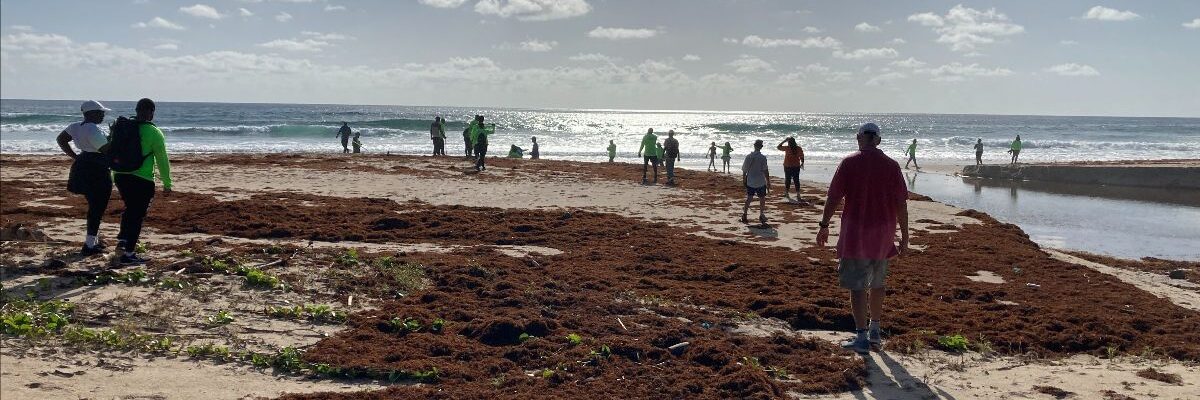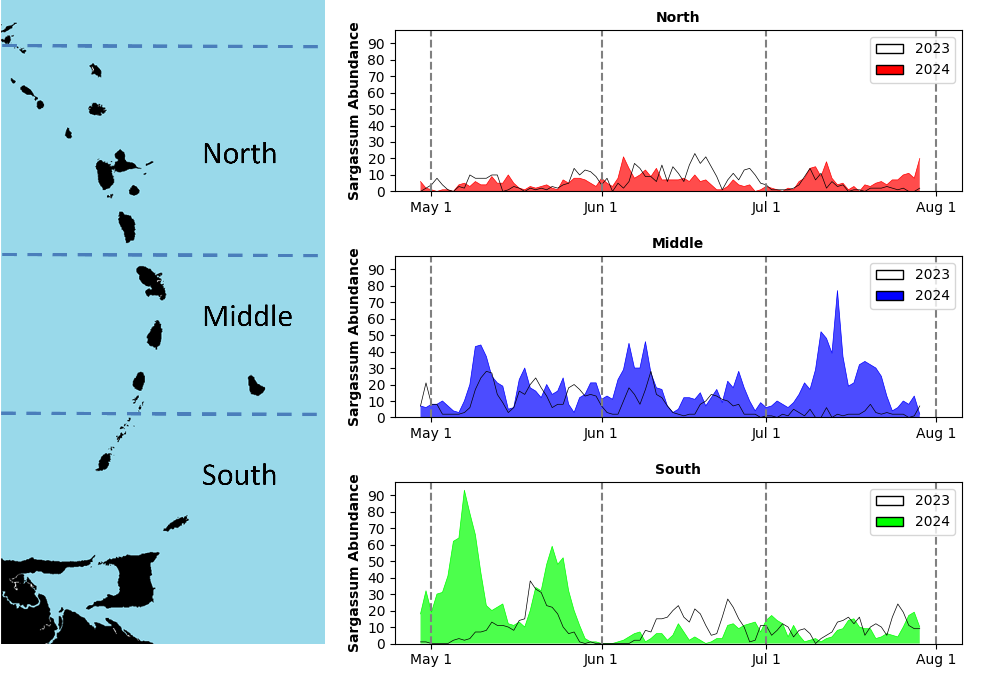

Experts at the Barbados-based Centre for Resource Management and Environmental Studies (CERMES) are warning that large swathes of the Eastern Caribbean will be affected by severe blooms of Sargassum seaweed for the next three months.
CERMES, in its sub-regional outlook bulletin for the April 29 to July 30 period, indicated that Sargassum seaweed remains overabundant across the central Atlantic.
Stretching as far north as the British Virgin Islands and as far south as Trinidad and Tobago, CERMES advised that “severe influxes are expected in the Eastern Caribbean with the possibility of heavy buildup on coasts, especially in the middle and southern islands”.
Through satellite imagery, it was observed that dense accumulation is present in the region east of Barbados and Trinidad. Cloud cover to the east of the Guianas is hindering the detection of sargassum.
The southeastern Caribbean, covering Grenada and Trinidad has already begun to be affected by very severe influxes of Sargassum seaweed, which is expected to continue throughout May. Mild to moderate conditions should resume from early June and continue throughout July, CERMES said.
Current projections suggest the middle islands of the Eastern Caribbean, including Barbados, St Lucia, St Vincent and Martinique may face historic highs of seaweed blooms in mid-July.

Carried along by ocean currents, Sargassum first infiltrated Caribbean waters around 2011 and has threatened the economic viability of tourism in several countries across the region.
In a June 2022 Our Today investigation, the National Environment and Planning Agency (NEPA) informed that Sargassum seaweed, which is not endemic to the region, was first documented on Jamaican shores in 2015 during the third great regionally ‘bloom’.
While Sargassum has proved to be a nuisance for beach lovers and ocean enthusiasts, the seaweed does provide refuge for migratory species. It serves as an essential habitat for many fish and invertebrates. The free-floating algae will not attach to the ocean floor as its movements depend solely on ocean currents.
NEPA further disclosed that Sargassum acts as a critical nursery habitat providing shelter and food for endangered species such as sea turtles and commercially important fish species such as tuna.
In a manageable form, it also plays a role in beach nourishment and is a crucial contributor to shoreline stability.







Comments